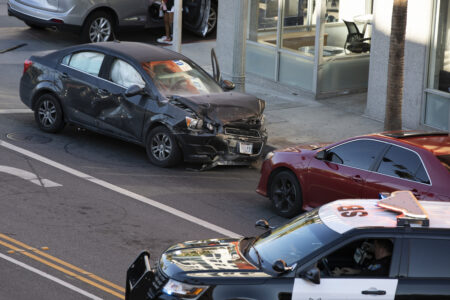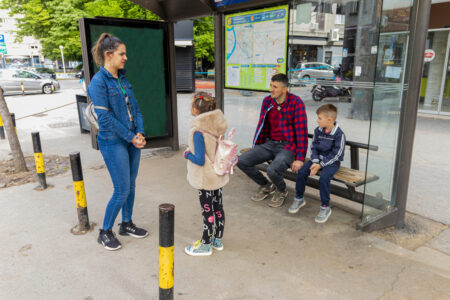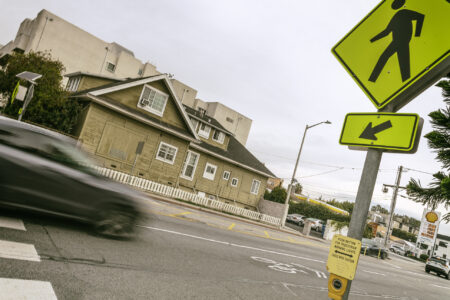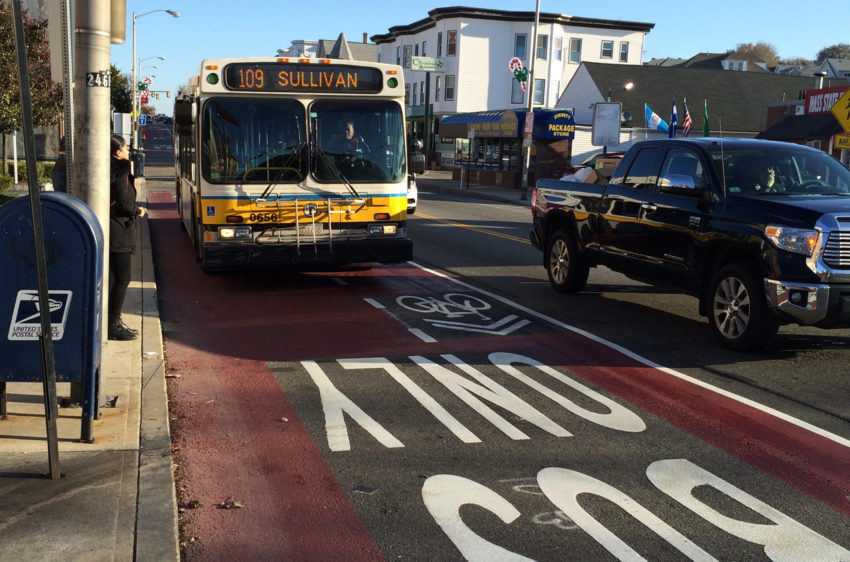
Share On Social!
America’s capital is piloting a four-month bus lane project to encourage more commuters to ride the bus.
Currently, buses with popular downtown routes are stuck in congestion with everyone else. However, transportation professionals in Washington, D.C. (10.7% Latino) hope to change that fact by dedicating one lane to the public during rush hour.
Transportation Truths
There are at least half a dozen truths to know about transportation:
- Vehicles pollute our cities.
- Vehicle traffic injuries are the leading cause of injury, death for children and young adults ages 5-24, comprising about 20% of all deaths.
- Crashes cost over $200 billion annually, which includes medical costs, congestion, property damage, and workplace as well as household productivity loss.
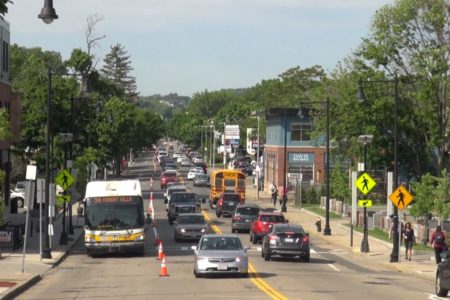
Pilot bus-only lane on Washington Street in Boston. Source: Streetfilms - Latinos and low-income populations lack access to frequent, reliable transit services that contribute to health and wealth inequities.
- Widening roadways does not improve safety nor reduce congestion.
- Public transit supports cleaner air, safety, and mobility.
However, because large portions of federal, state, and local funding have been dedicated to roadways for the past 70 years—and so little has been dedicated to public transit—bus services are failing at frequency and/or coverage in many cities.
Residents in these cities might not understand the benefits of transit, thus are resistant to invest tax dollars in those programs or departments at a scale that could make an impact.
Cities with large, growing Latino populations need to finance frequent and reliable transit projects to improve access to wellness- and capital-building opportunities, according the new “State of Latino Housing, Transportation and Green Space” research review” from Salud America!.
Some cities lack the funding, political will, and/or public support to spend money on the transit infrastructure that is necessary to shift traditional views about mobility.
So, they try small, temporary projects to slowly build political, community backing through piloted tactical transit projects.
Making Roads Work for the Public
Dedicated bus lanes are increasingly popular as they allow drivers and riders to bypass congestion.
Moreover, they are far less costly than rail or light rail projects.
Pop-up, bus-only lanes can be implemented in a short amount of time— as compared to the decades it might take to implement traditional routes—and can quickly build public support.
“Rather than devoting months to outreach that never produces a satisfying consensus, temporary lanes can enable agencies to showcase the benefits of a proposal in practice, then monitor and tweak if necessary,” writes TransitCenter, a New York City (29.1% Latino) -based, public transit foundation.
Everett, Massachusetts (22.9% Latino), for example, successfully repurposed a parking lane into bus-only on one street in late 2016. The “pop-up” bus lane has cut passenger travel time by 8 minutes during the height of traffic. The project has generated public support for more permanent solutions.
In 2018, Boston (19.4% Latino) used cones to test a bus-only lane on Washington Street. Improvements were noticed immediately, and city officials committed to making the project permanent.
LivableStreets Alliance, a Massachusetts (11.9% Latino) transit group, is working with the City to pilot additional bus-only lanes throughout the city. Watch a short film on this story from Streetfilms.
Now, D.C. is testing a temporary bus-only lane during rush hour—while also accommodating riders affected by maintenance work.
The Capital’s Transportation Initiative
H and I streets are two of the busiest bus corridors in D.C., and they are failing bus commuters as well as drivers.
During the city’s busiest traffic, vehicles can be seen going less than 10 mph — sometimes as slow as 3 mph.
“A large share of all bus riders every day are moving through these corridors and they are often stuck in traffic,” Cheryl Cort, policy director for the Coalition for Smarter Growth, told The Washington Post. “Bus lanes are a crucial tool to changing that.”
D.C.’s District Department of Transportation (DDOT) is taking advantage of maintenance opportunities to improve bus service on 1.4 miles of these streets. They are also applying learned lessons from last year.
Unlike a previous attempt to create a pop-up lane on Rhode Island Avenue in 2018, the new bus-only travel lanes will be painted bright red, and include “Bus Lane” lane markings. They will also include numerous street signs signifying the path.
Additionally, Traffic control officers from various city agencies will conduct enforcement.
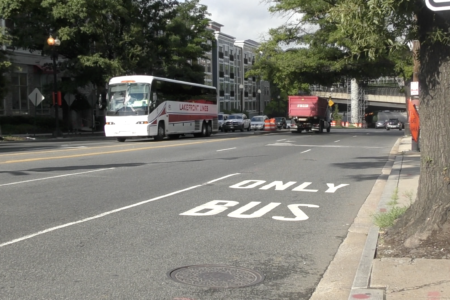
Up to 70 buses will run from 7 a.m. to 10 a.m. and 4 p.m. to 7 p.m from June through September, which will provide service for more than a dozen routes.
The lanes will also be open to bicycles, school buses, taxis, and drivers making a right turn.
“We see this as the beginning of really speeding up the implementation of bus lanes and delivering high-quality transit,” Cort said. “We will bring back the riders that we have been losing and we will attract new riders because it is going to become a fast, efficient and inexpensive way to get where you need to go.”
Share this example with transportation planners in your community and see if you can start something similar.
Don’t forget to also use Salud America!’s State of Latino Transportation Fact Sheet to help make your case for equitable implementation of transit projects.
Explore More:
Transportation & MobilityBy The Numbers
27
percent
of Latinos rely on public transit (compared to 14% of whites).

